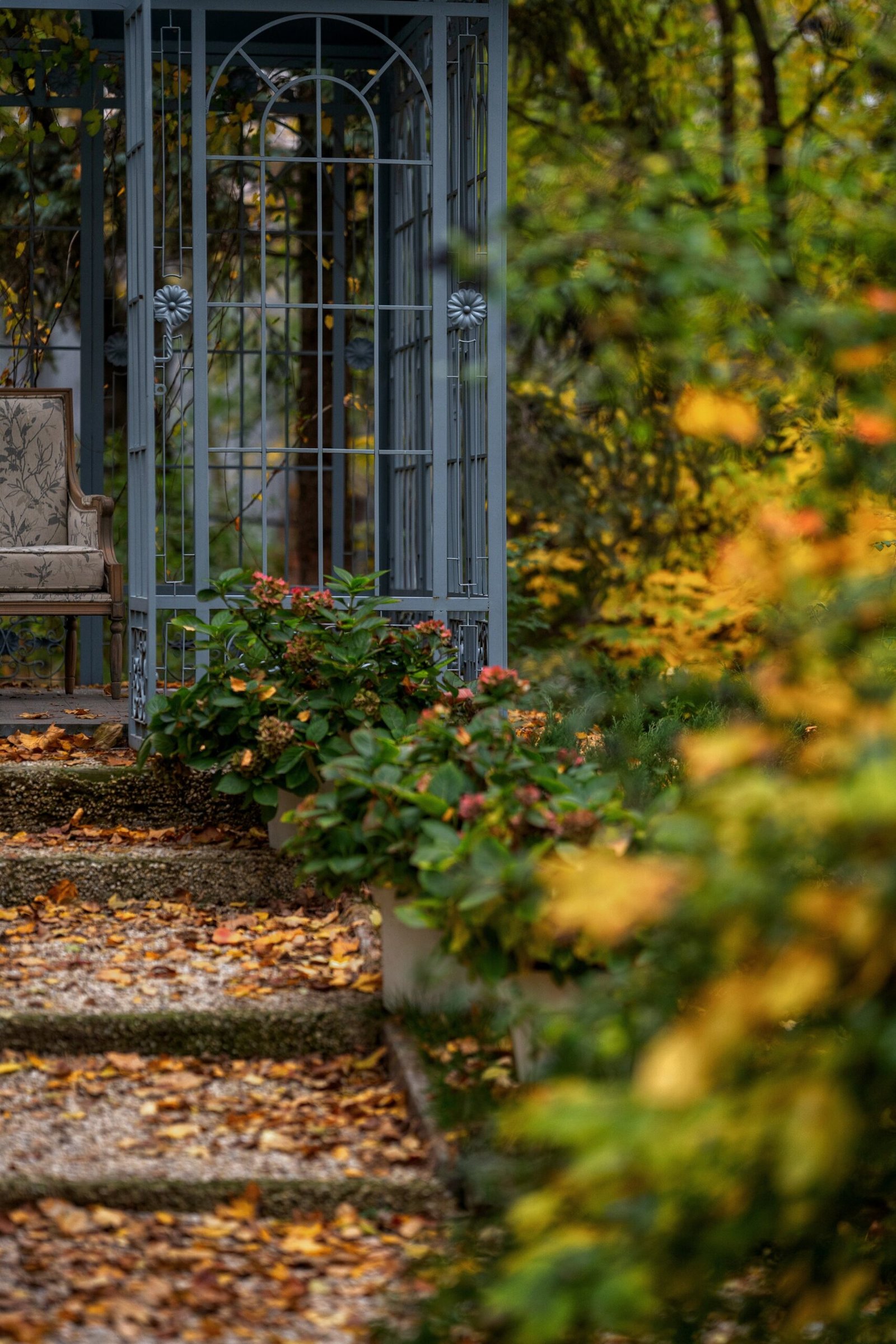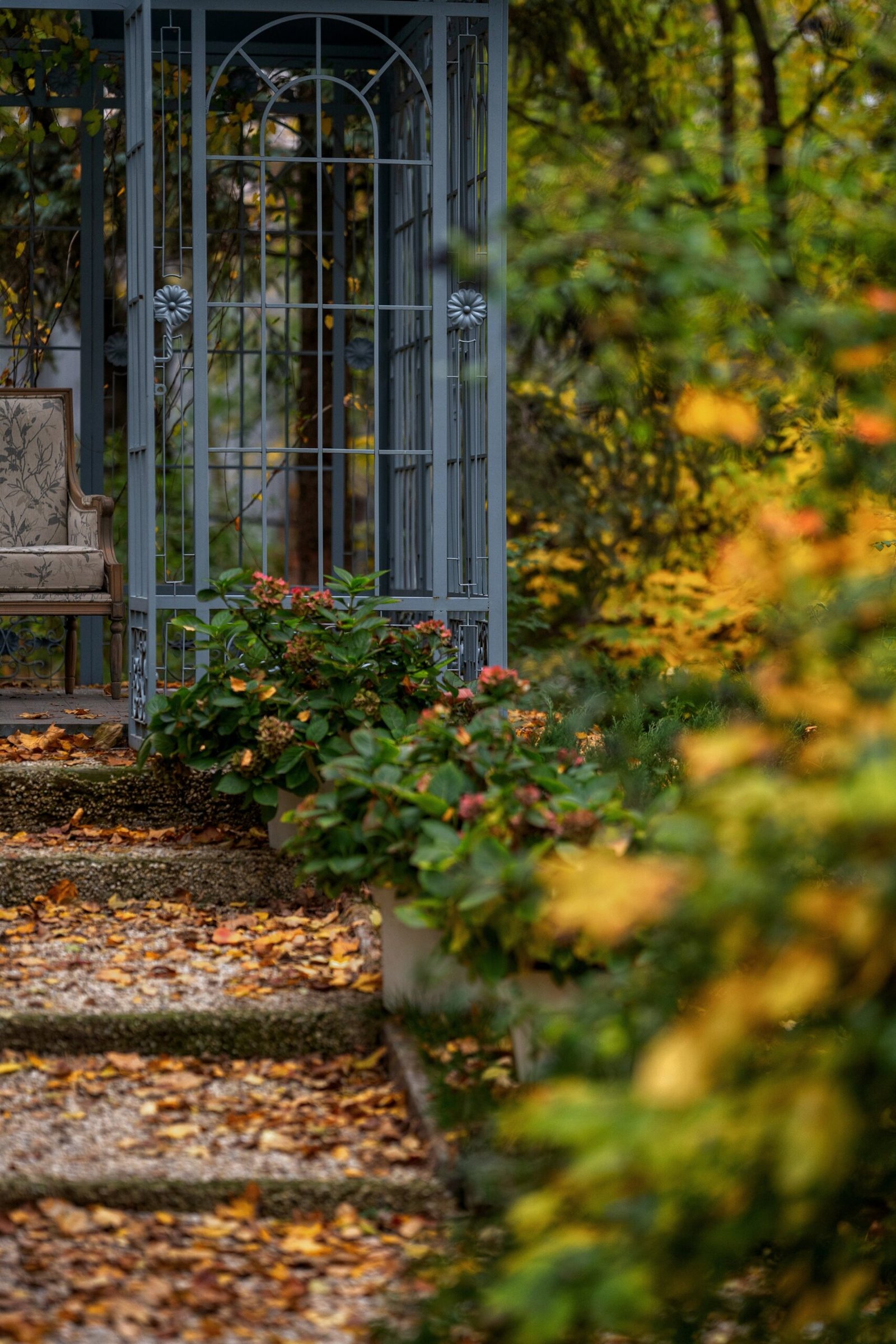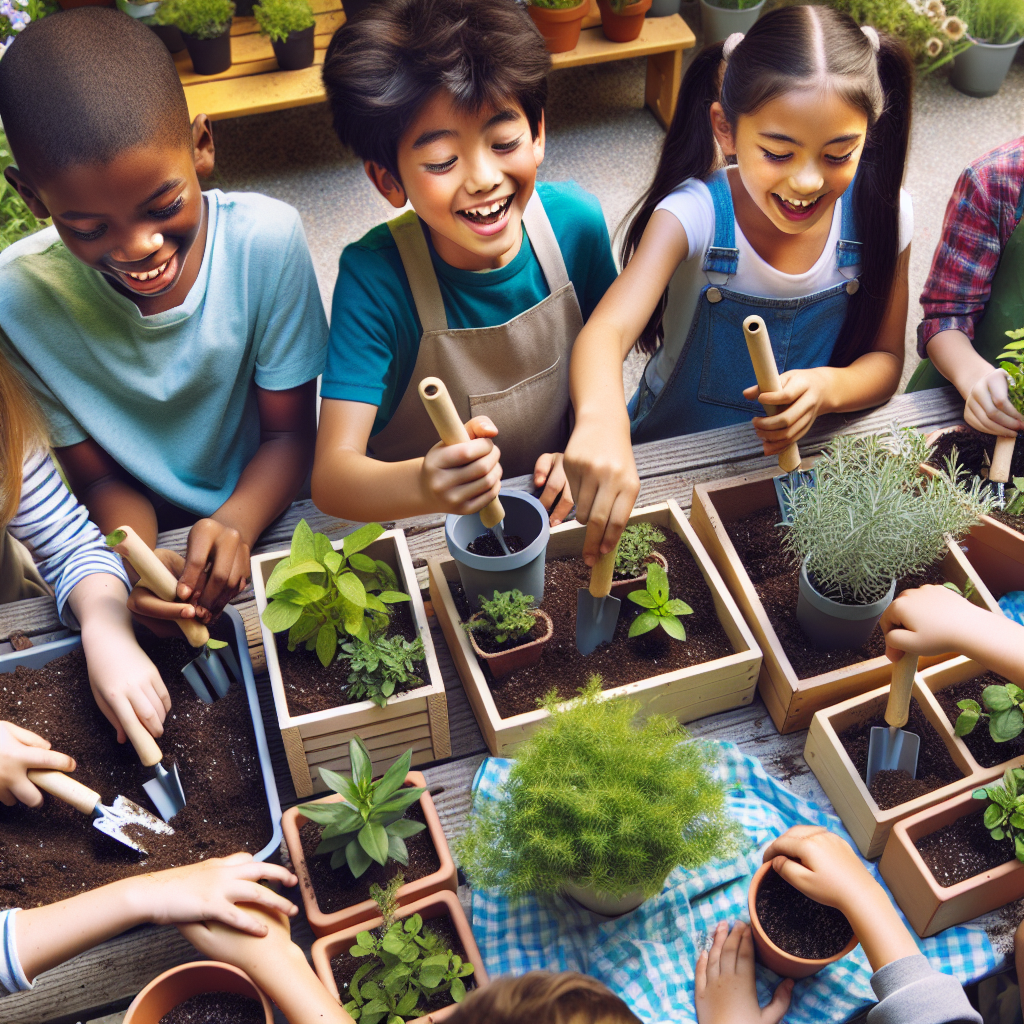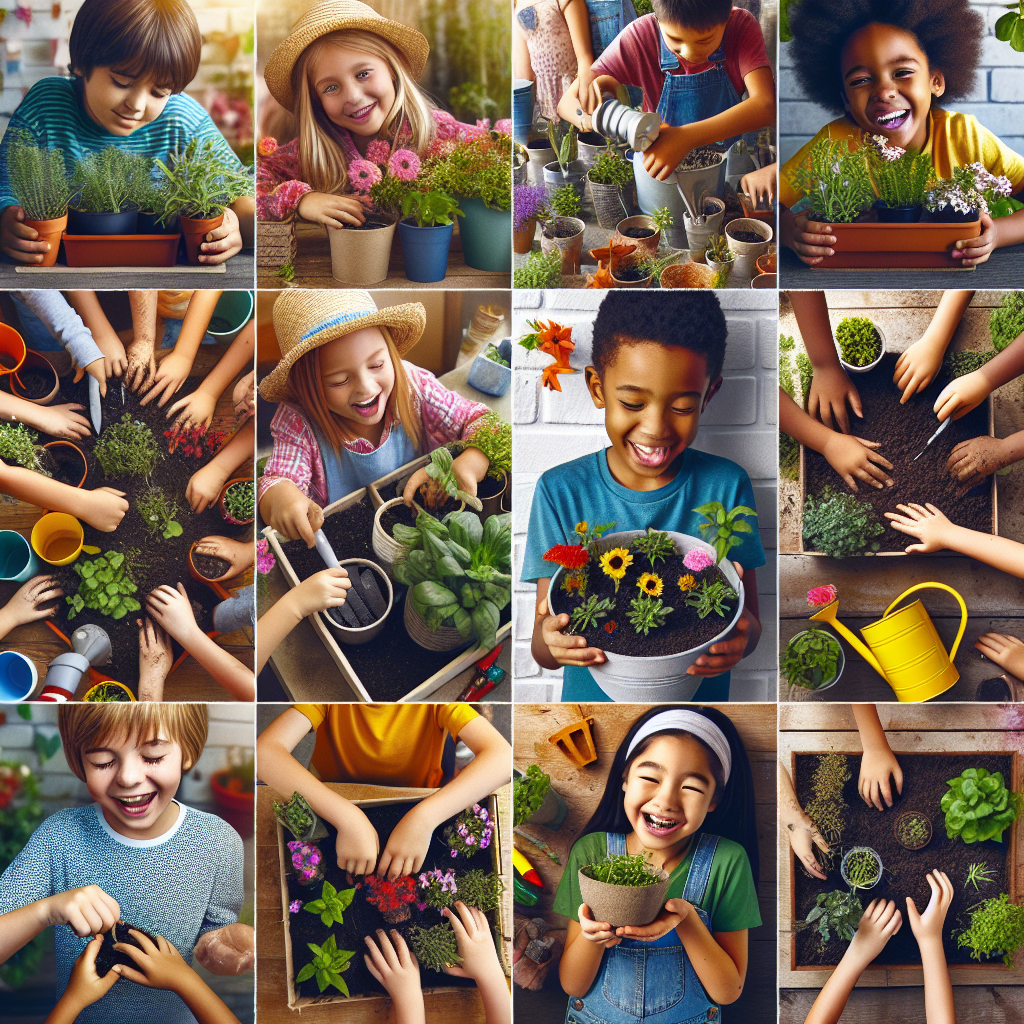
Join us on a green thumb adventure as we explore the world of container gardening in fourth grade! In this exciting and hands-on experience, you will discover the joys of growing your own plants in small spaces. From selecting the perfect containers to nurturing your plants, you will learn valuable skills that will not only make your garden flourish but also spark a lifelong love for nature and sustainability. Get ready to unleash your creativity and embark on this one-of-a-kind gardening journey!

Choosing the Right Containers
Consider the size and material of the containers
When it comes to container gardening, selecting the right containers is crucial for the success of your plants. One important factor to consider is the size of the containers. You want to make sure that the containers are spacious enough to accommodate the roots of your plants and allow for proper growth. It’s essential to choose containers that are deep and wide enough for your chosen plants.
In addition to size, the material of the containers also plays a significant role. Common options include plastic, clay, and wood. Plastic containers are lightweight and easy to move, while clay containers offer better breathability for the plants. Wooden containers can provide a rustic and natural look, but be cautious of their durability, as they may rot over time.
Evaluate the drainage system of the containers
Proper drainage is vital for container gardening. It ensures that excess water can flow out of the containers, preventing waterlogging and root rot. When selecting containers, make sure they have drainage holes at the bottom or the ability to add them. If the containers you have chosen do not have drainage holes, it’s crucial to create them yourself. This can be done by using a drill to make small holes in the bottom of the containers.
Think about the availability and affordability of containers
While you may have a wide range of containers to choose from, it’s important to consider their availability and affordability. Depending on the scale of your container gardening project, you may need multiple containers, so finding them within your budget is essential. Consider checking local gardening stores, online marketplaces, or even repurposing items such as buckets or old plant pots. Remember, container gardening should be accessible to everyone, regardless of budget limitations.
Selecting Suitable Plants
Research plants that thrive well in containers
Not all plants are suitable for container gardening. Some plants require more space for their root systems or have specific needs that cannot be met in a confined space. To ensure the success of your container garden, it’s crucial to research and select plants that are known to thrive well in containers. Look for plants that have compact growth habits, such as cherry tomatoes, herbs, or marigolds. These plants are often more adaptable to containers and will reward you with healthy growth and abundant blooms or fruits.
Consider the climate and growing conditions in your area
Another essential factor to consider when selecting plants for your container garden is the climate and growing conditions in your area. Different plants have varying temperature, sunlight, and moisture requirements. Take some time to understand the climate of your region and choose plants that are best suited for those conditions. For example, if you live in a hot and dry climate, drought-tolerant plants like succulents or lavender might be a great choice. On the other hand, if you live in a cooler and more humid area, ferns or impatiens could thrive better.
Choose plants that are appropriate for the 4th-grade level
Since this container gardening project is aimed at 4th-grade students, it’s important to choose plants that are appropriate for their level of understanding and involvement. Opt for plants that are easy to grow and maintain, allowing students to have a hands-on experience and witness the entire lifecycle of a plant. Plants like sunflowers, radishes, or lettuce are excellent choices that will engage students while providing valuable learning opportunities.
Preparing the Containers
Clean the containers before use
Before getting started with planting, it’s essential to clean the containers properly. This step helps remove any dirt, dust, or potential pests, ensuring a clean and healthy environment for your plants. To clean the containers, simply wash them with warm soapy water and rinse thoroughly. Avoid using harsh chemicals or cleaners as they may leave residues that can be harmful to plants.
Create proper drainage holes in the containers
As mentioned earlier, proper drainage is crucial for the success of your container garden. If the containers you have chosen do not have pre-existing drainage holes, it’s necessary to create them yourself. Using a drill, carefully make small holes in the bottom of the containers. Ensure that the holes are large enough to allow excess water to drain out but not too big, as this may cause the soil to wash out.
Add a layer of gravel or broken pottery for improved drainage
To further enhance the drainage in your containers, consider adding a layer of gravel or broken pottery before adding the potting mix. This layer acts as a barrier between the soil and the drainage holes, preventing them from getting clogged. It allows the excess water to move freely and ensures that the roots are not sitting in soggy soil. Spread a layer of gravel or broken pottery at the bottom of the container before adding the potting mix.
Potting Mix and Fertilizers
Use a balanced potting mix for container gardening
Choosing the right potting mix is essential for providing the necessary nutrients and support to your container plants. Opt for a well-draining potting mix that is specifically formulated for container gardening. These mixes typically contain a blend of organic matter, such as peat moss or compost, along with materials like perlite or vermiculite to improve drainage. Avoid using soil from your garden, as it may be too heavy and compacted for container plants.
Consider organic or synthetic fertilizers for plant nutrition
To ensure the healthy growth and development of your container plants, they will need adequate nutrition. When it comes to fertilizing, you have two main options: organic or synthetic fertilizers. Organic fertilizers are derived from natural sources, such as compost or seaweed, and provide a slow-release of nutrients. Synthetic fertilizers, on the other hand, are manufactured and offer a more concentrated and immediate nutrient boost. Consider the preferences and restrictions of your school or students when selecting fertilizers.
Learn how to properly feed the plants for optimal growth
Feeding your container plants at the right time and with the correct nutrients is essential for their optimal growth. Different plants have different feeding requirements, so it’s important to familiarize yourself with the specific needs of your chosen plants. Generally, container plants should be fed with a balanced fertilizer every few weeks during the growing season. Follow the package instructions for application rates and frequency, and be cautious not to over-fertilize, as this can cause nutrient burn or harm the plants.

Planting the Seeds or Seedlings
Follow the instructions on seed packets for correct planting depth
When it comes to planting seeds in your containers, it’s crucial to follow the instructions provided on the seed packets. Different plant species have different requirements for planting depth, so it’s important to adhere to these guidelines. Generally, small seeds need to be planted closer to the soil surface, while larger seeds require deeper planting. Placing the seeds at the correct depth will ensure proper germination and healthy seedling growth.
Handle delicate seedlings with care
If you decide to start your container garden with seedlings instead of seeds, it’s important to handle them with care. Young seedlings are fragile and can easily be damaged if handled roughly. When transplanting them into the containers, support the seedlings by their leaves or root ball, gently preventing any harm to the delicate stems. This way, you can ensure the proper and safe establishment of your plants.
Involve students in the planting process
Engage and involve your 4th-grade students in the planting process to make the container gardening experience more meaningful for them. Assign each student a specific task, such as sowing seeds, potting seedlings, or watering the newly planted containers. This hands-on involvement will not only foster a sense of responsibility amongst the students but also create an exciting and memorable learning opportunity.
Watering and Irrigation
Teach students about proper watering techniques
Watering your container plants correctly is crucial for their health and survival. When it comes to watering, it’s important to teach your students proper techniques to ensure that they are not overwatering or underwatering the plants. Show them how to water the containers thoroughly, allowing the excess water to drain out of the drainage holes. Encourage them to feel the moisture level of the soil before watering again, ensuring that it has dried out slightly but not completely.
Discuss the importance of moisture levels for plant health
Moisture levels play a significant role in the overall health and well-being of your container plants. Too much water can lead to root rot and suffocation, while too little can cause drought stress and stunted growth. Explain to your students the importance of maintaining the right moisture balance in the soil and how it directly impacts the health and growth of the plants. By understanding these concepts, students will be better equipped to care for their container garden.
Introduce concepts like overwatering and underwatering
As part of the watering discussions, introduce students to concepts like overwatering and underwatering. Explain that overwatering occurs when plants receive more water than they need, resulting in waterlogged soil and suffocated roots. On the other hand, underwatering happens when plants do not receive sufficient water, leading to dehydration and wilting. Teach students how to identify the signs of overwatering and underwatering, and emphasize the importance of finding the balance to ensure plant health.

Sunlight and Location
Explain the importance of sunlight for photosynthesis
Sunlight is the ultimate source of energy for plants through the process of photosynthesis. It provides them with the necessary energy to grow, develop, and produce food. Explain to your students that plants need sunlight to make their own food and survive. Discuss how different plants have varying requirements for sunlight exposure and how to choose suitable locations for the containers based on these needs. Encourage students to observe and understand the effects of sunlight on plant growth.
Choose suitable locations for the containers based on plant requirements
When selecting the locations for your containers, it’s important to consider the specific sunlight requirements of your chosen plants. Some plants thrive in full sun, while others prefer partial shade or indirect sunlight. Take the time to understand these needs and choose suitable locations accordingly. Place the containers in areas that receive the recommended amount of sunlight for the plant species you are growing. This will ensure that your container plants receive the right amount of light for healthy growth.
Discuss the effects of too much or too little sunlight
While sunlight is essential for plant growth, too much or too little can have adverse effects. Teach your students about the consequences of extreme sunlight exposure. Discuss with them how excessive sunlight can lead to sunscald or leaf burn, while insufficient sunlight can result in weak and leggy growth. This knowledge will help students become more aware of the impact of sunlight and make informed decisions regarding the location of their container plants.
Pest Control and Plant Care
Teach students about common garden pests
Pests can be a challenge in any garden, and container gardens are no exception. Take the time to educate your students about common garden pests they may encounter, such as aphids, slugs, or caterpillars. Discuss how these pests can damage plants and ways to identify them. Encourage students to regularly inspect their container plants for any signs of pest activity, as early detection can help prevent infestations from spreading.
Discuss natural pest control methods
When it comes to pest control, it’s important to emphasize the importance of employing natural and eco-friendly methods. Introduce students to natural pest control strategies, such as using companion planting, attracting beneficial insects, or making homemade organic sprays. Encourage them to explore and implement these methods to minimize the use of harmful chemicals and promote a healthy and balanced ecosystem in their container garden.
Educate on the regular care and maintenance of container plants
Maintaining container plants goes beyond just pest control. It’s important to educate your students on the regular care and maintenance required for the healthy growth of their plants. Discuss topics like pruning, deadheading, staking, and grooming. Explain the benefits of removing dead or faded flowers, providing support to tall plants, and keeping the containers tidy. By instilling these habits early on, you will equip your students with the knowledge and skills needed to care for their container garden.

Monitoring and Observations
Encourage students to monitor plant growth and development
Encouraging students to monitor the growth and development of their container plants is an integral part of the learning process. Ask them to observe and document any changes they notice in their plants, such as new leaves, flowers, or fruits. Emphasize the importance of regular monitoring and how it helps students understand the life cycle of plants and identify any issues or abnormalities that may arise.
Discuss the importance of observing changes in plants over time
Observing changes in plants over time provides valuable insight into their growth and adaptation. It allows students to witness the transformation from seed to plant, reinforcing key concepts like plant life cycles and plant adaptations. Discuss the significance of this process with your students and encourage them to take note of any changes they observe. This continuous observation helps foster a deeper appreciation and understanding of nature.
Introduce concepts like life cycles and plant adaptations
As your students engage in their container gardening adventure, take the opportunity to introduce and discuss concepts like life cycles and plant adaptations. Explain how plants go through different stages, such as germination, growth, flowering, and reproduction. Help students understand the importance of these stages in the overall life cycle of a plant. Additionally, discuss how plants adapt to their environment and different growing conditions. These lessons will broaden their understanding of nature and plant biology.
Harvesting and Enjoying the Fruits
Guide students on when and how to harvest their produce
One of the most rewarding aspects of container gardening is the ability to harvest and enjoy the fruits of your labor. Guide your students on when and how to harvest their produce. Teach them how to recognize the right time for harvesting each plant, whether it’s when the fruits are fully ripened or when the vegetables have reached a desirable size. Demonstrate the proper harvesting techniques to avoid damaging the plants and encourage students to harvest with care and gratitude.
Discuss the satisfaction of enjoying the fruits of their labor
Celebrating the harvest and enjoying the fruits of their labor is a moment of immense satisfaction for your 4th-grade students. Discuss with them the joy and sense of accomplishment that comes from growing their own food. Encourage them to savor the flavors and share their produce with others. By experiencing this satisfaction firsthand, students will have a newfound appreciation for the natural world and the importance of sustainable and self-sufficient practices.
Encourage students to share their harvest with others
Lastly, encourage your students to share the abundance of their container garden harvest with others. Whether it’s donating the produce to a local food pantry, sharing it with their classmates, or offering it to friends and family, this act of giving fosters a sense of community and kindness. Discuss the joy of giving, the impact it can have on others, and the role that their container garden played in making it possible.
Container gardening provides a fantastic opportunity for 4th-grade students to get hands-on experience in nurturing and caring for their plants. By choosing the right containers, selecting suitable plants, and properly preparing the containers, students can embark on a green thumb adventure that teaches them valuable lessons in responsibility, observation, and the wonders of nature. With proper watering, sufficient sunlight, and pest control measures, students can witness the growth and development of their plants, eventually enjoying the fruits of their labor. This container gardening journey will not only nurture their love for plants and the environment but also instill important life skills that they can carry with them for years to come. Happy gardening!






